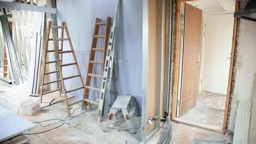
Enjoying the outdoors from your cabin in the woods is a dream that many of us hold dear. Something about having your own private getaway and adventure destination is amazing. It is a unique connection with the great outdoors that should be cherished.
However, as wonderful as the great outdoors are, there are some aspects that are better left outside. As all cabin owners know, pests and local wildlife can be some of the most difficult challenges associated with owning a cabin, especially if you’re not living in it year-round. Keeping your cabin in ship-shape condition is almost contingent on keeping these critters out.
Fortunately, there are several strategies that can help. Protecting your beloved cabin can be as easy as a few quick and important steps prior to locking up.
Deterring Insects
Insects can be one of the most challenging — and frustrating — aspects of spending any amount of time outdoors. They can be particularly bad out in the woods as well as in and around your cabin. Bugs such as mosquitos, ticks and flies can be avoided as a common occurrence while you’re at your cabin. But you may also run into things like unfamiliar spiders, bees, wasps or ants.
Outside of being general pests that you don’t really want to have around, some of them can actually do a lot of damage to your beloved cabin. For instance, insects such as wood boring beetles, carpenter bees or termites are known to bore into wood homes and can cause a lot of damage over the years. Preventing them from moving into your cabin in the first place is the best strategy for avoiding the expensive repairs that might be required otherwise.
Treated wood, varnishes and paints rather than unfinished wood in the cabin can make a big difference. Several different species of wood boring pests will not bore through finishes, increasing the protection of your cabin. Small holes created by these pests can be an avenue for water collection and condensation within the wood of your home. Ultimately, this can lead to water damage in your cabin and attract more types of insects.
Securing the Home
Although insects may be some of the most sneaky and annoying pests you deal with at your cabin, they aren’t the only ones. Wildlife and vermin can also be a significant problem in your cabin and cause a lot of problems. In some instances, they can even lead to dangerous situations or health concerns. As you well know, injuries in remote areas can be difficult to get treatment for in a timely manner.
Fortunately, some of the most significant strategies for protecting your cabin from wildlife are some of the simplest to deal with. For instance, making sure to clean your cabin and dispose of all trash can be a powerful means of limiting wildlife taking over during your absence. Likewise, if you’re not going to be visiting for a while, it is worth taking all the food out of the cabin. If there aren’t any special treats in your cabin, chances are most wildlife critters are not going to make the effort to investigate.
Another important strategy to help prevent wildlife from getting into your cabin is to complete all your minor maintenance. Check for small holes or places where vermin might access the home and take steps to plug them up and fix them. Likewise, make sure doors and windows are locked and secured before you leave after an enjoyable weekend in the mountains.
Upgrades to Protect the Cabin
In some instances, you may consider some minor upgrades to your cabin to address some of your insect and wildlife pest concerns. For example, you might do some landscaping around your home to remove low shrubs and brush as well as branches and duff that could support small animals right next to your home. Cleaning up some of the brush and other vegetation around your cabin can also serve other purposes such as making your space more defensible in the event of a wildfire.
Another means of helping to secure your cabin might involve the installation of outdoor lighting. Automatic outdoor lights can dissuade animals that are surprised by the sudden light. Additionally, it makes it easier to spot something out in the yard when you’re staying at the cabin, which could give you more peace of mind.
You may also realize that you have some standard maintenance that needs done around the cabin and that doing it will also help with wildlife and other pest concerns. For instance, you might realize that you need to replace your cabin’s roof. Doing so will help winterize your cabin and protect it from the weather as well as wildlife. Closing any holes or cracks in your home can also prevent birds or bats from moving into your attic space.
Your cabin is a wonderful space that you love to visit to relax and get away from the crazy things going on in the city. Protecting your cabin from pests is an important aspect of maintaining that relaxing atmosphere. Fortunately, there are several steps you can take to do just that.
Sam Bowman writes about people, tech, wellness, and how they merge. He enjoys getting to utilize the internet for the community without actually having to leave his house. In his spare time, he likes running, reading, and combining the two in a run to his local bookstore.










